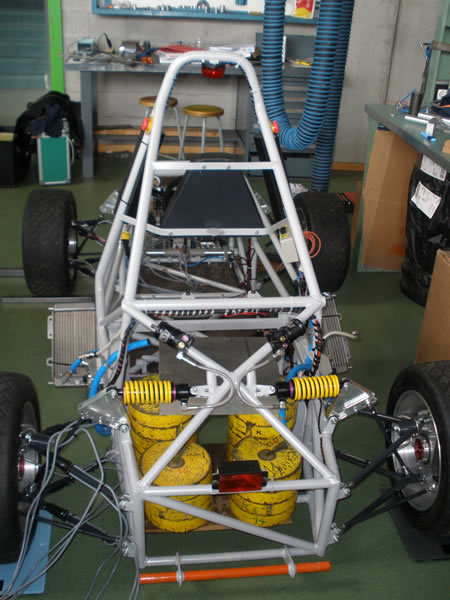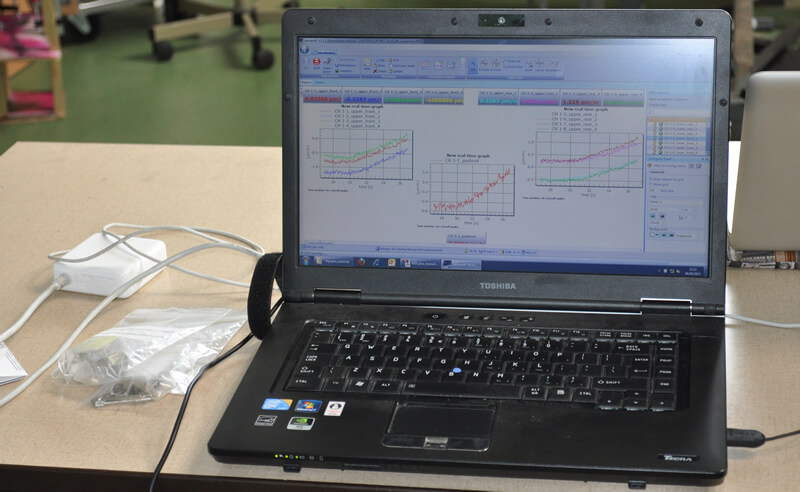Validation of FE Models by Using Strain Gauges
A crucial part of designing an efficient race car is the suspension system. It plays a part in reducing both weight and friction, optimizing vehicle performance. To reduce not only the total weight of the race car, but also the so-called unsprung mass, as little material as possible has to be used in the construction of the suspension system. A low unsprung mass is important, to ensure fast response of the suspension system to bumps and potholes, maintaining constant contact of the tires with the racetrack, and providing maximum vehicle control.
The stiffness of the suspension is another important part, as deformation in the suspension would influence the geometry of the car setup (such as caster, camber, and toe), which would adversely affect handling and rolling friction. In addition, the suspension has to handle all the forces acting on the race car to keep it on track when turning into corners at high speed.
To ensure the maximum weight reduction does not affect the structural strength, modern finite element (FE) simulation packages have been used in the design. Only one link in the chain for developing a sturdy, but lightweight, suspension was missing: validation of the FE models to ensure the models and the design are correct.
This validation, offering certainty about the design that the team was looking for, has been achieved by applying strain gages to different suspension parts. The choice was made to perform a test with direct loading by putting weight on the vehicle while measuring the force actually acting on the full suspension with weighing plates under the wheels.

